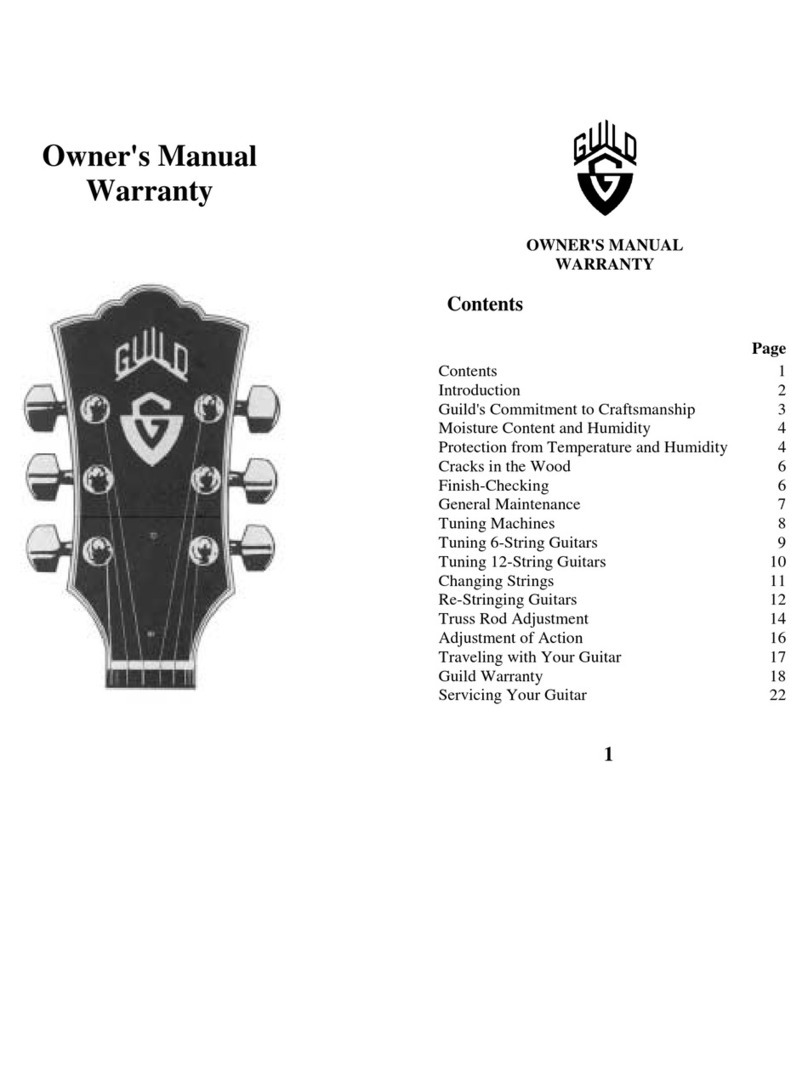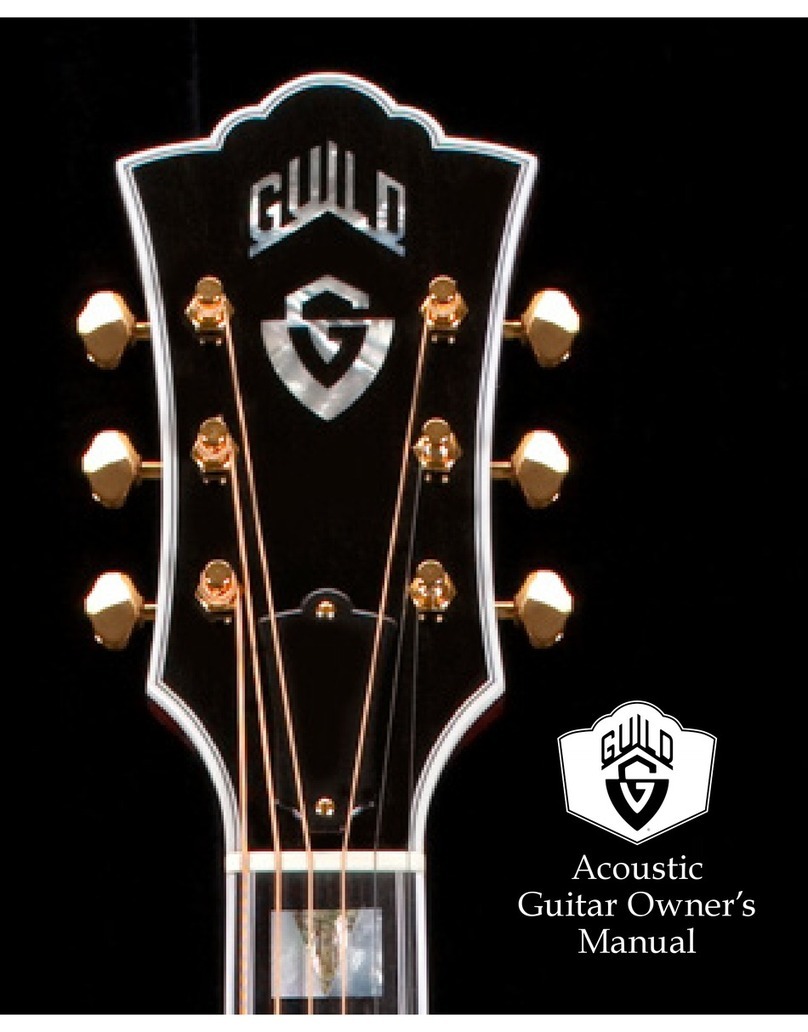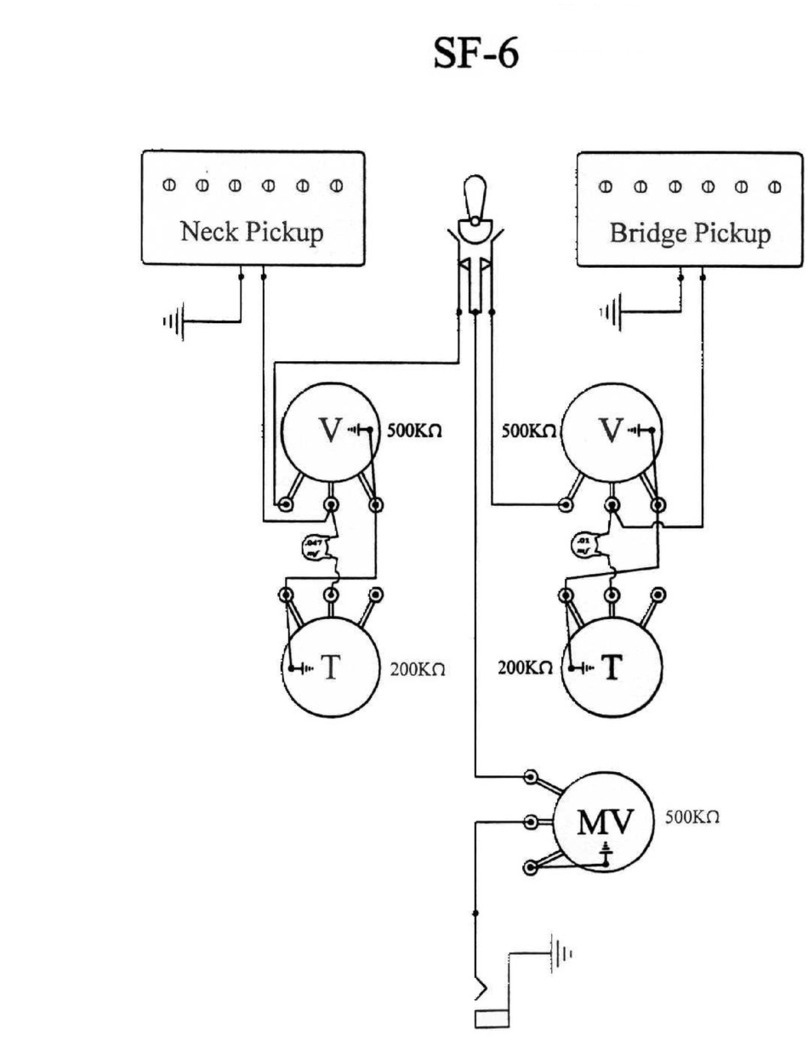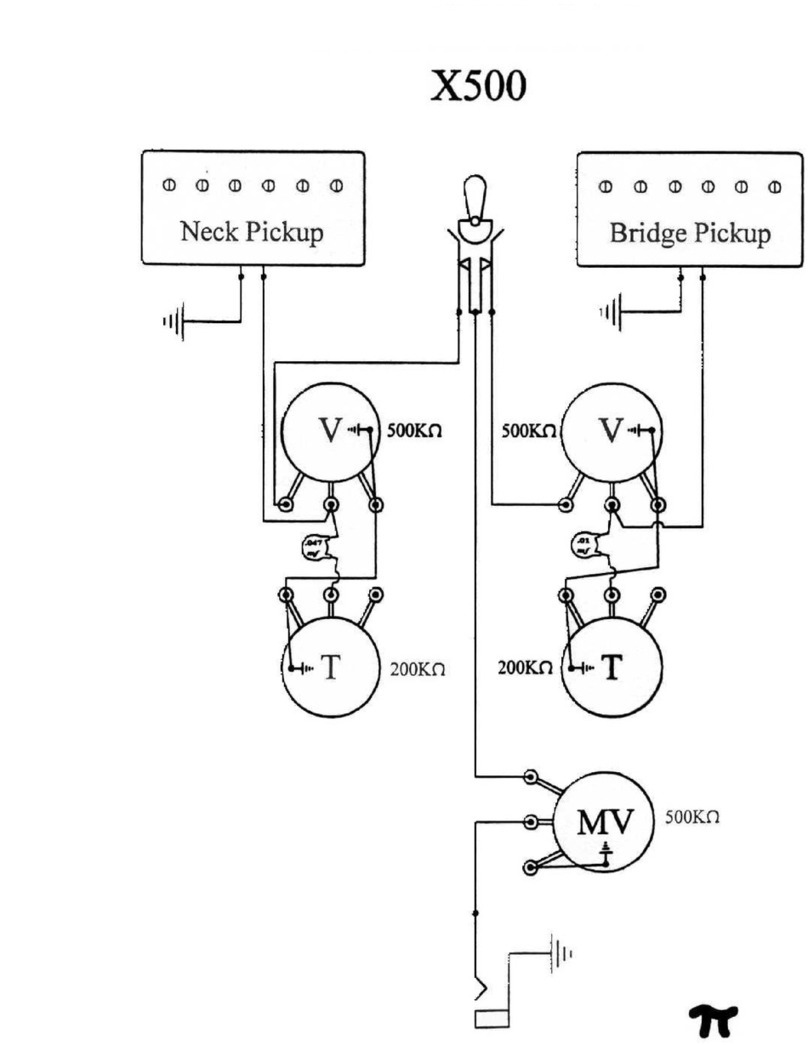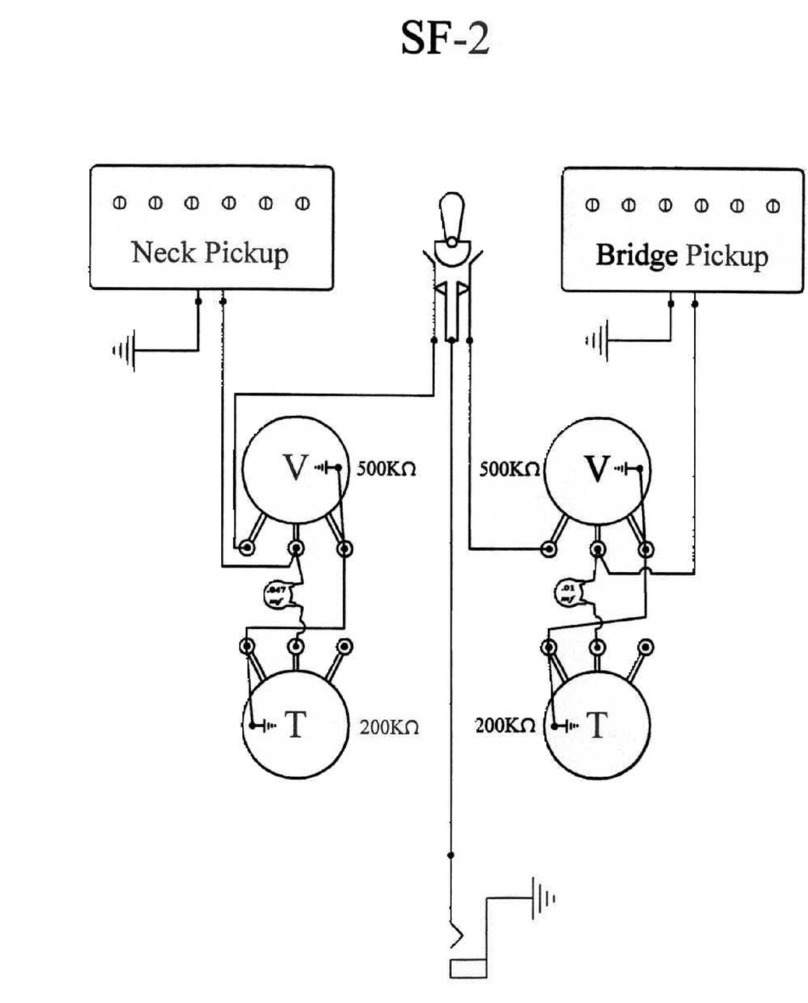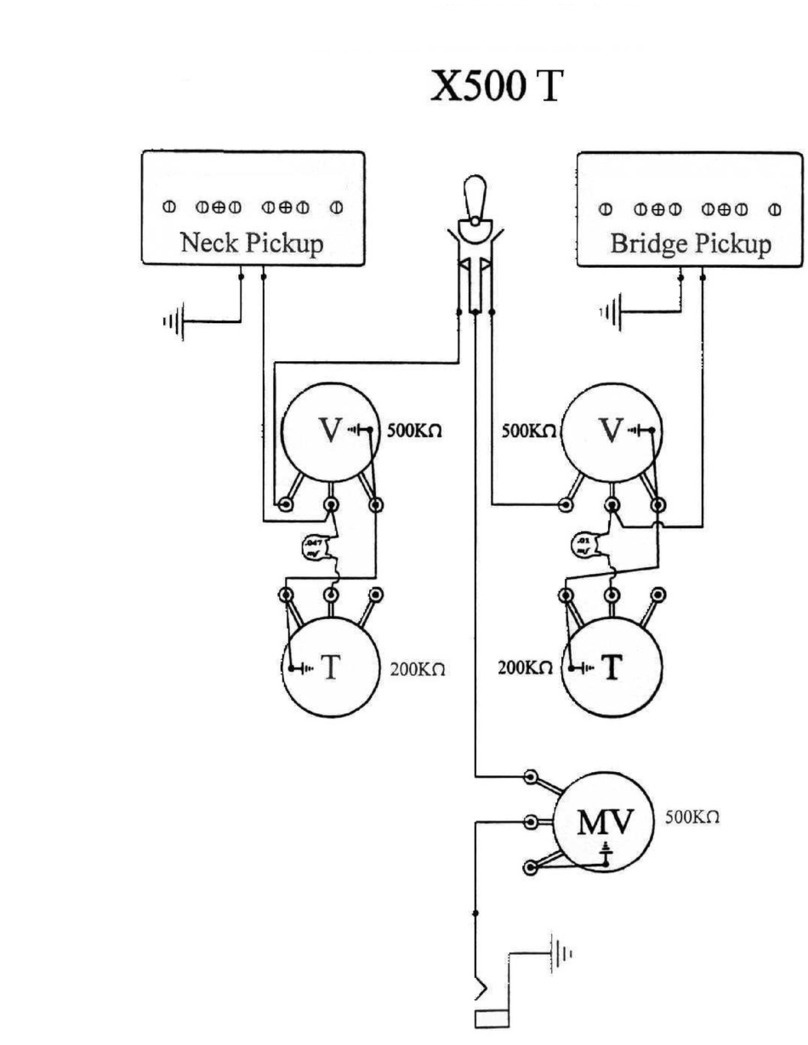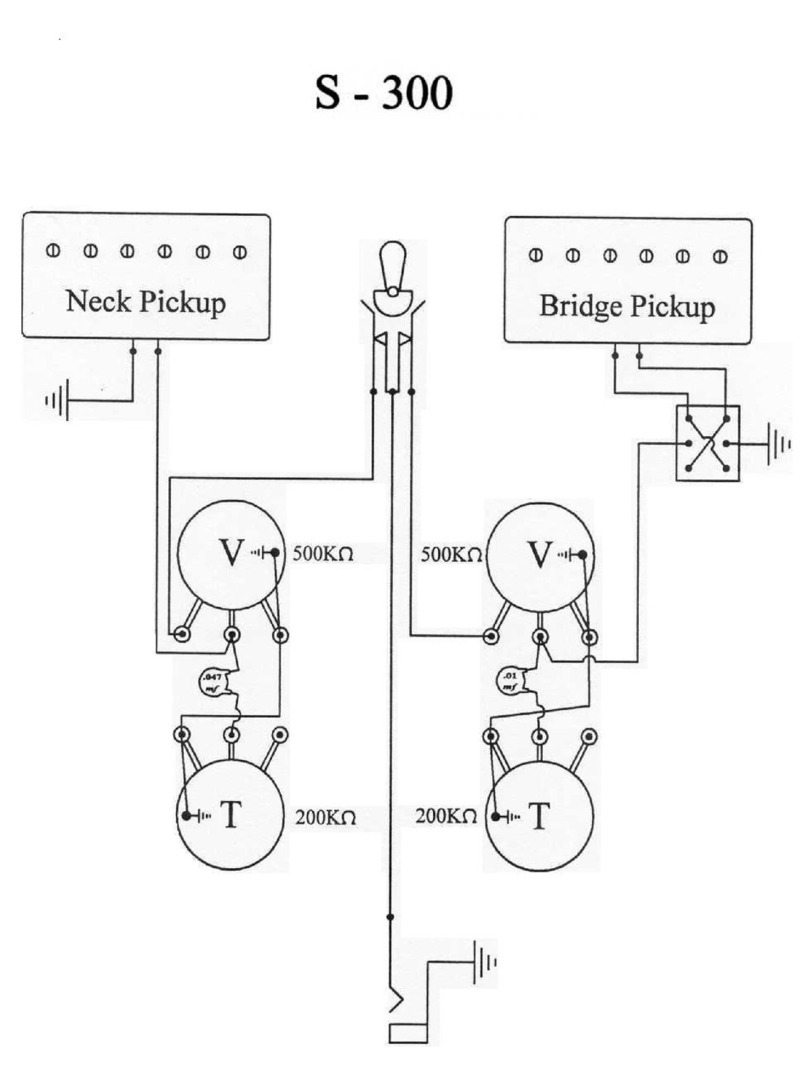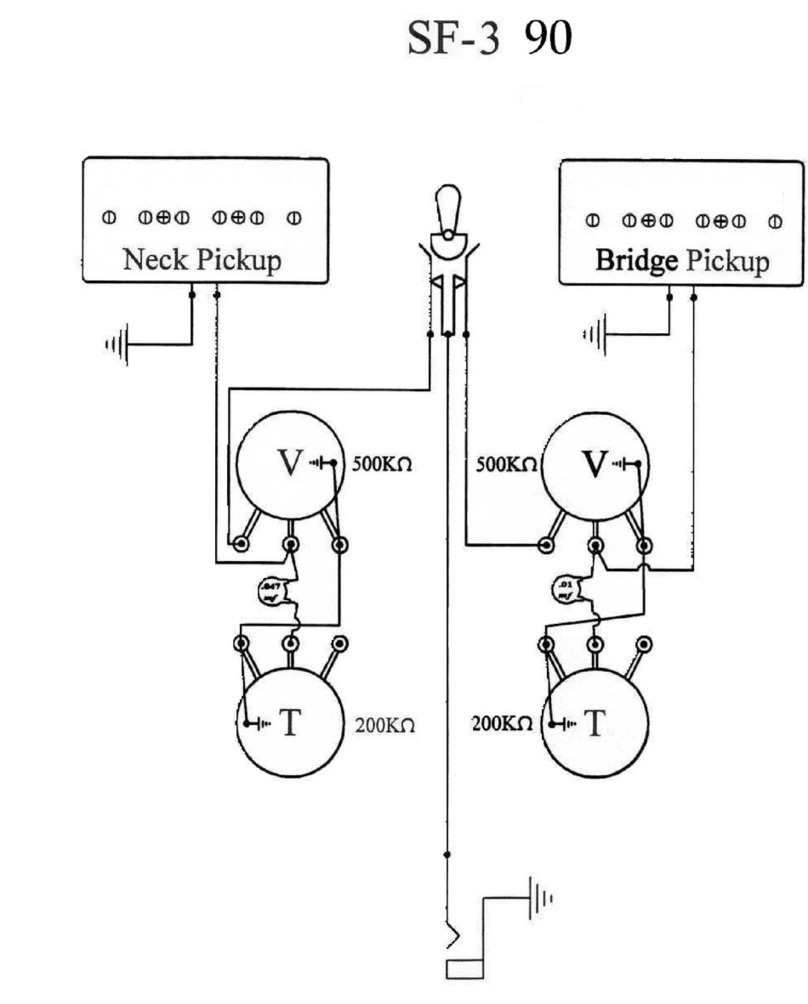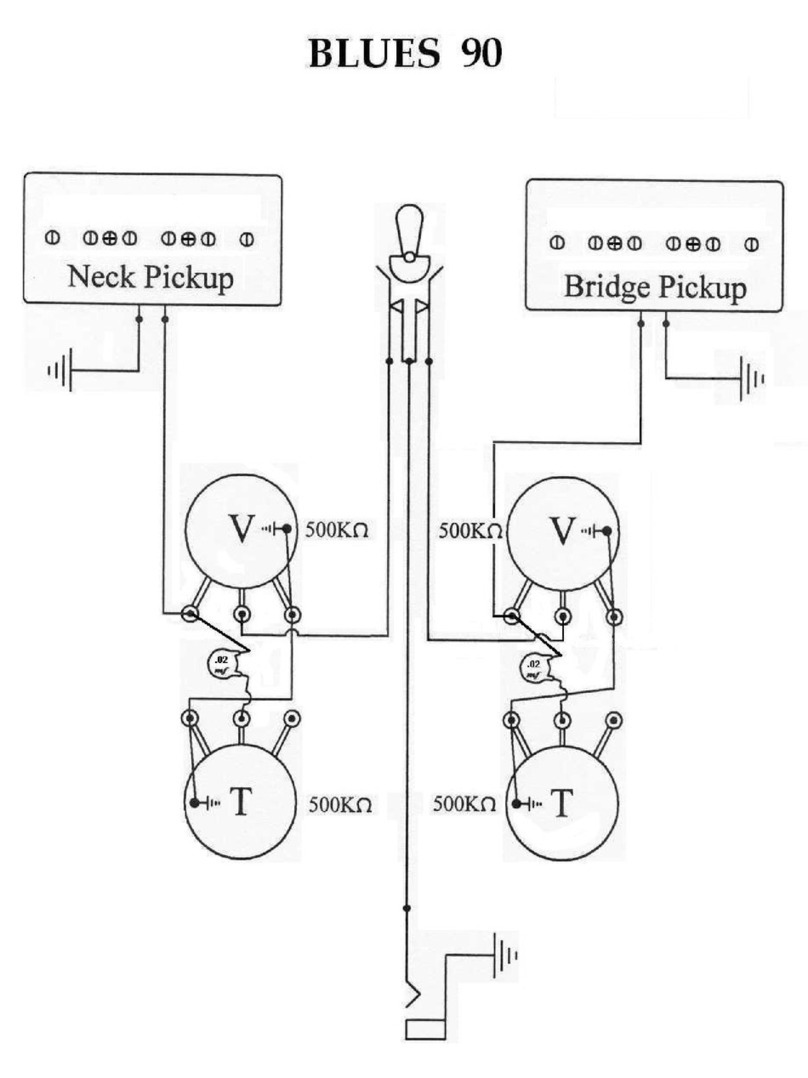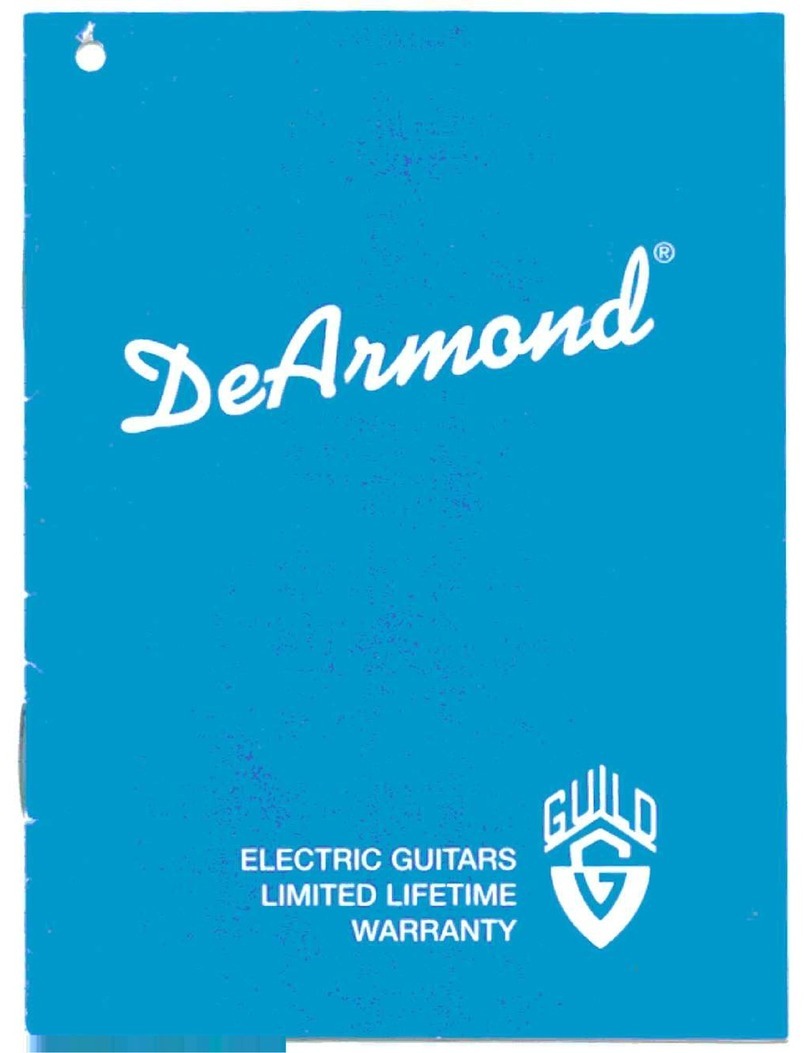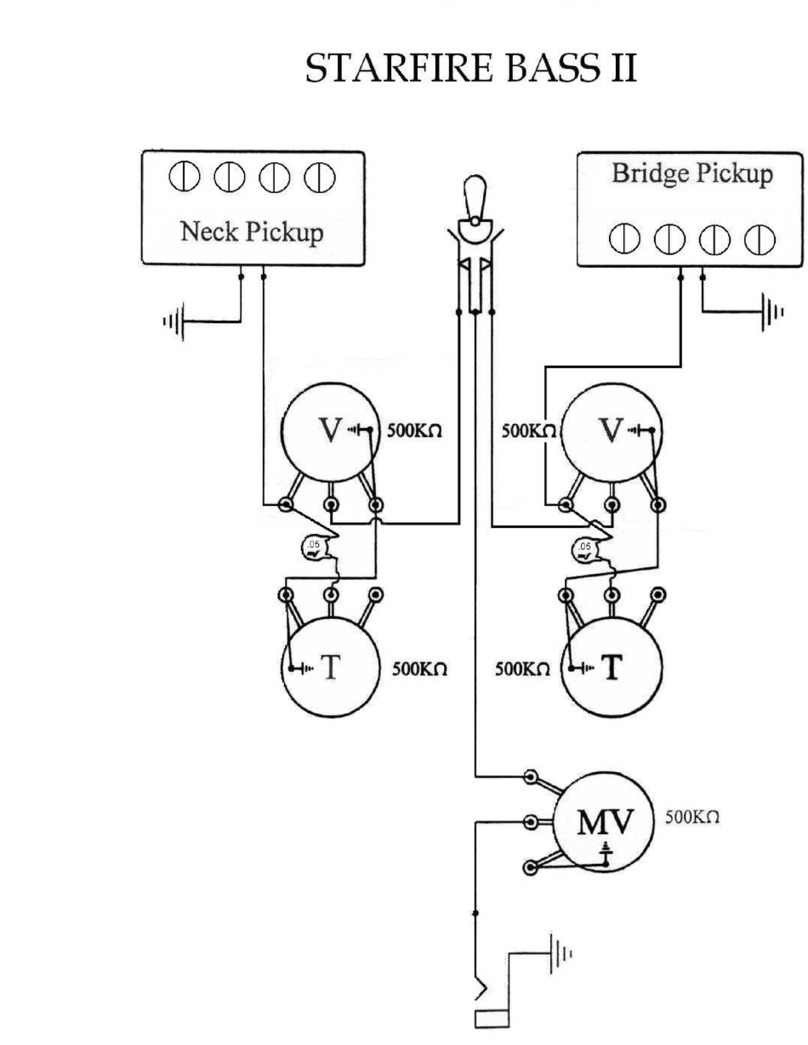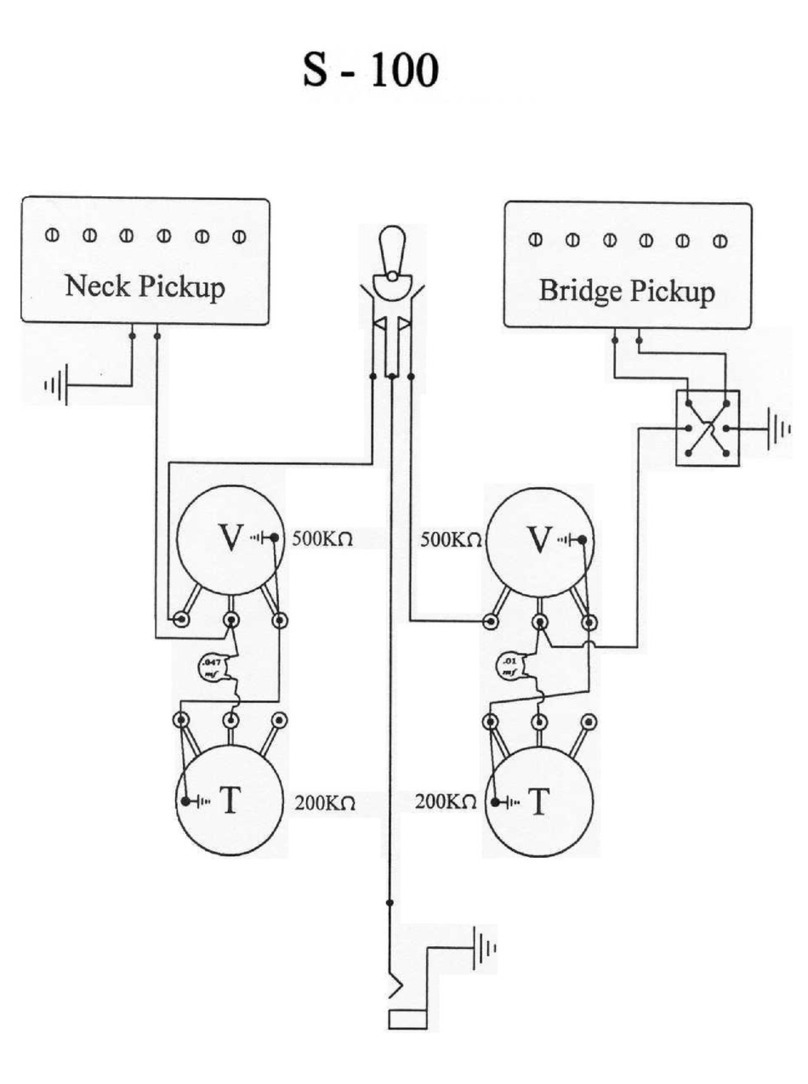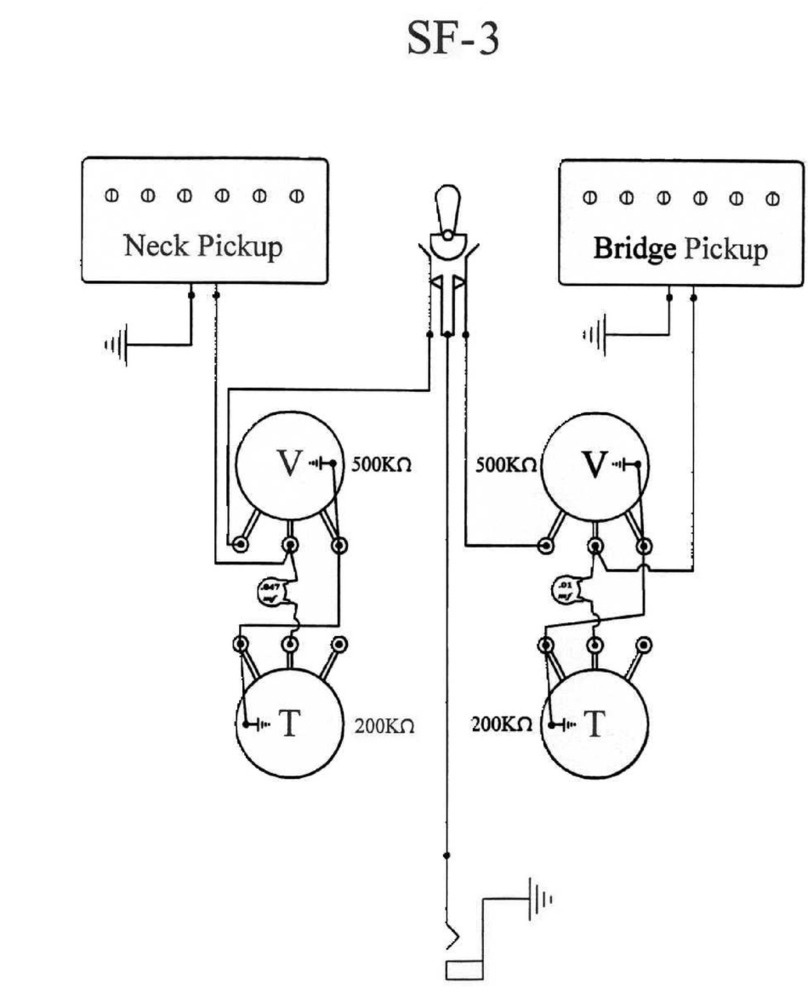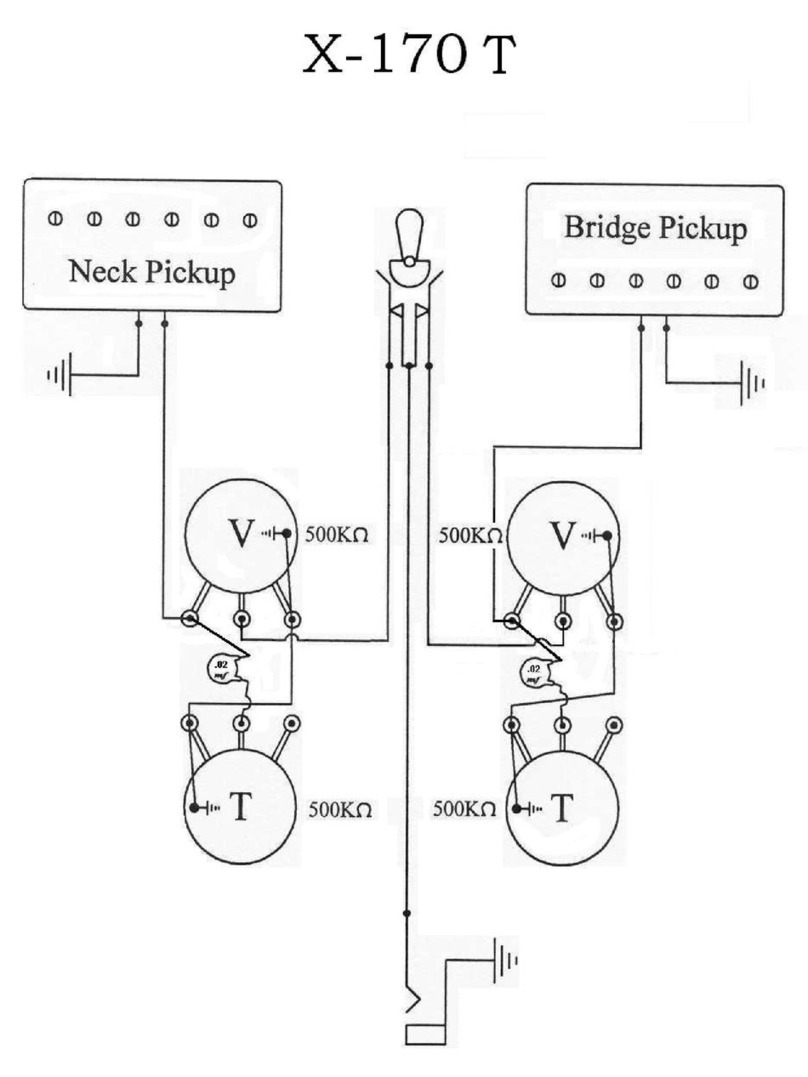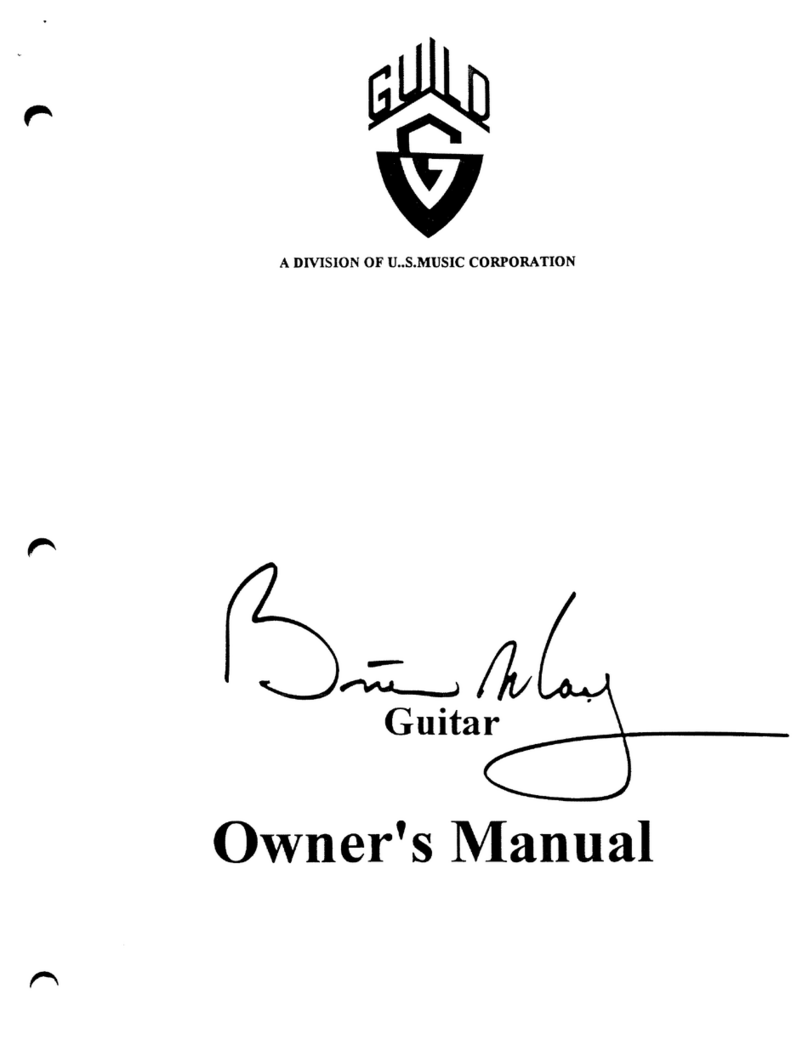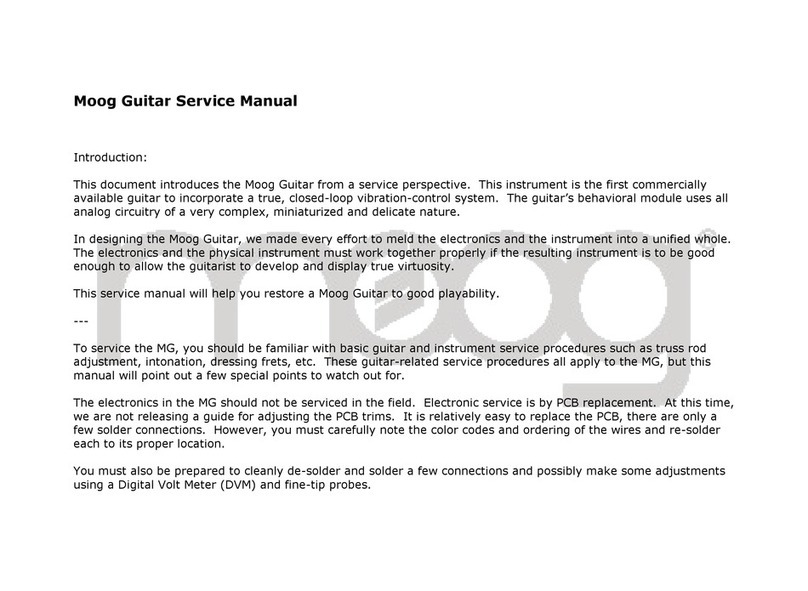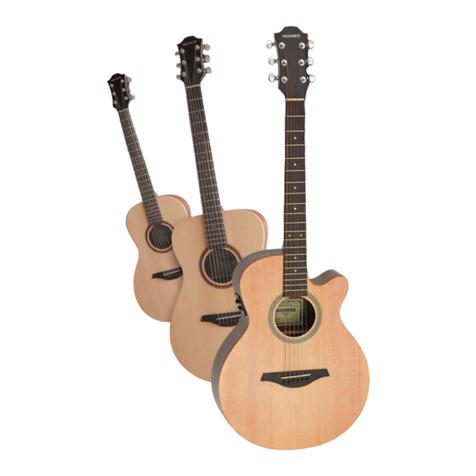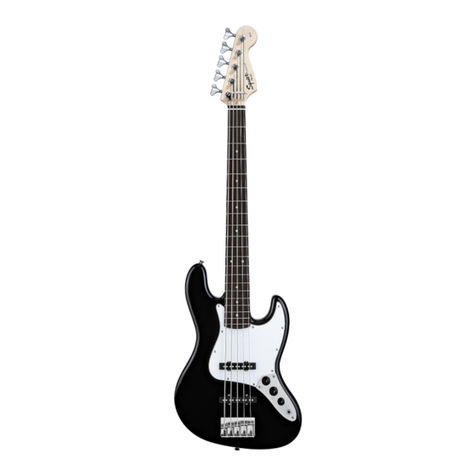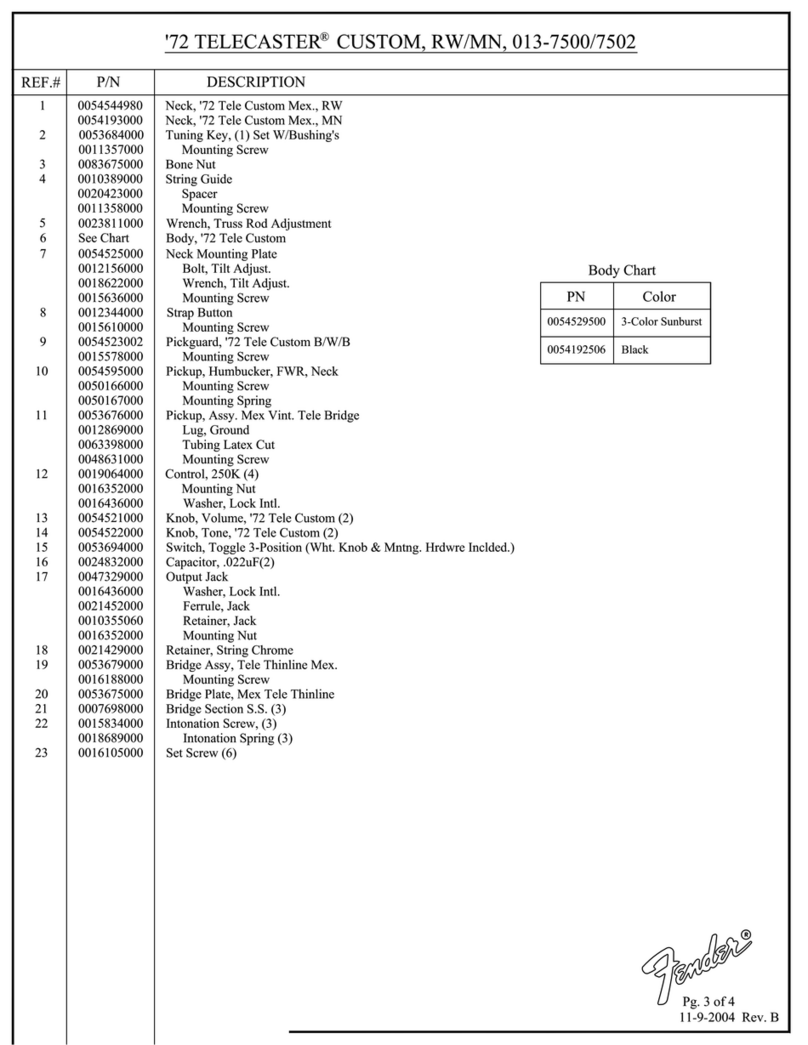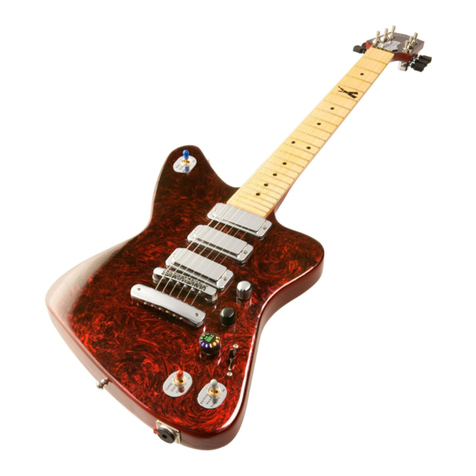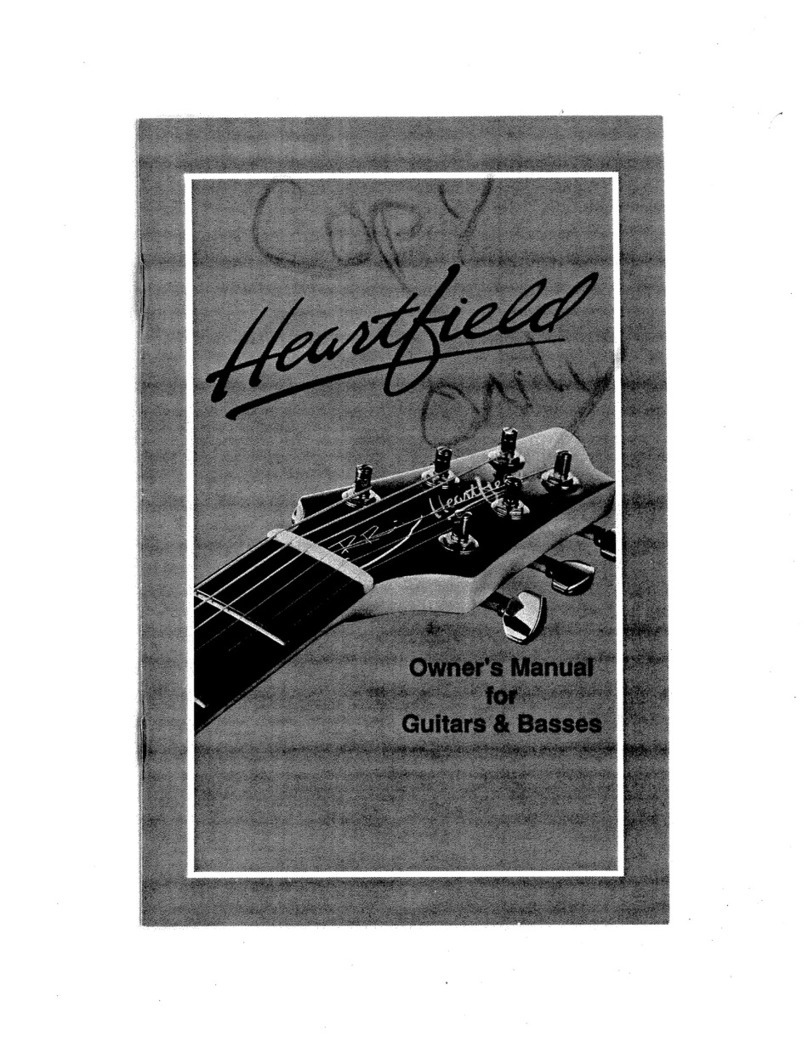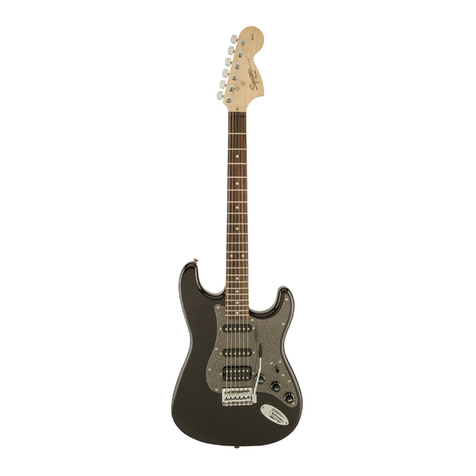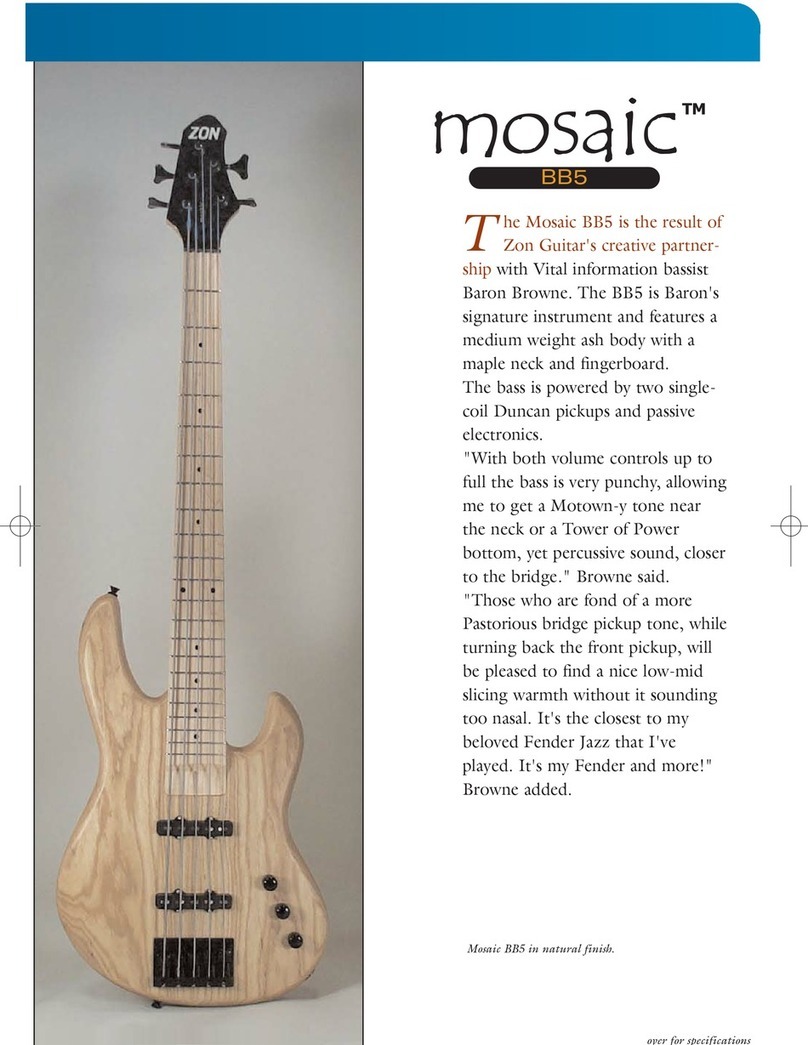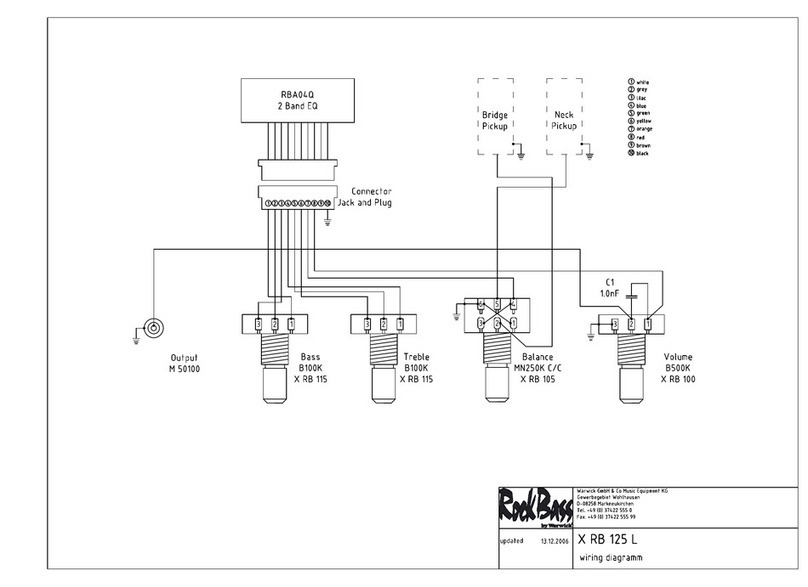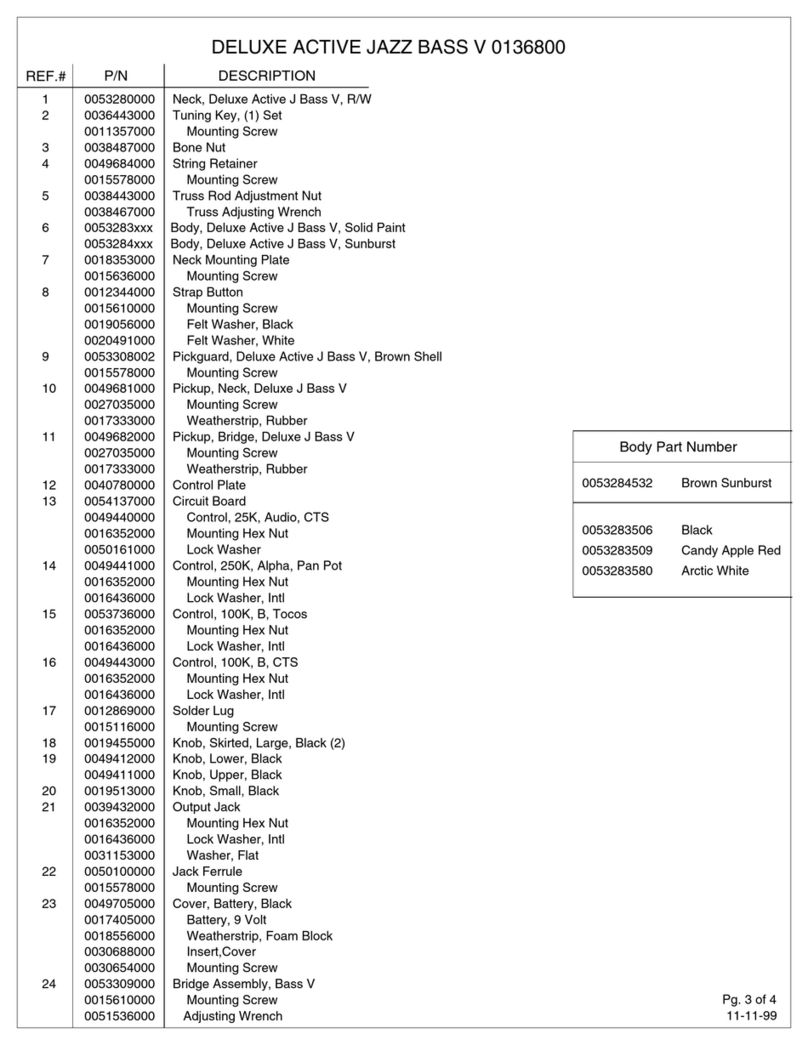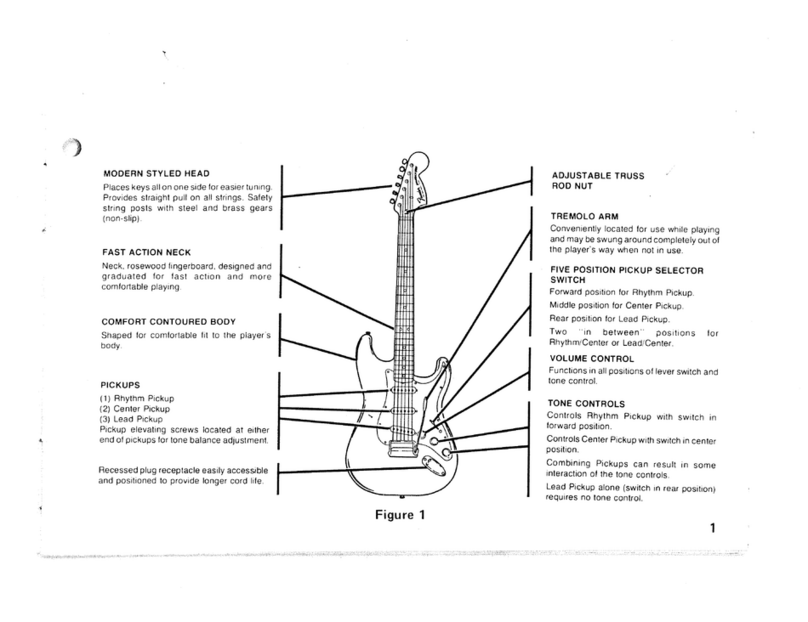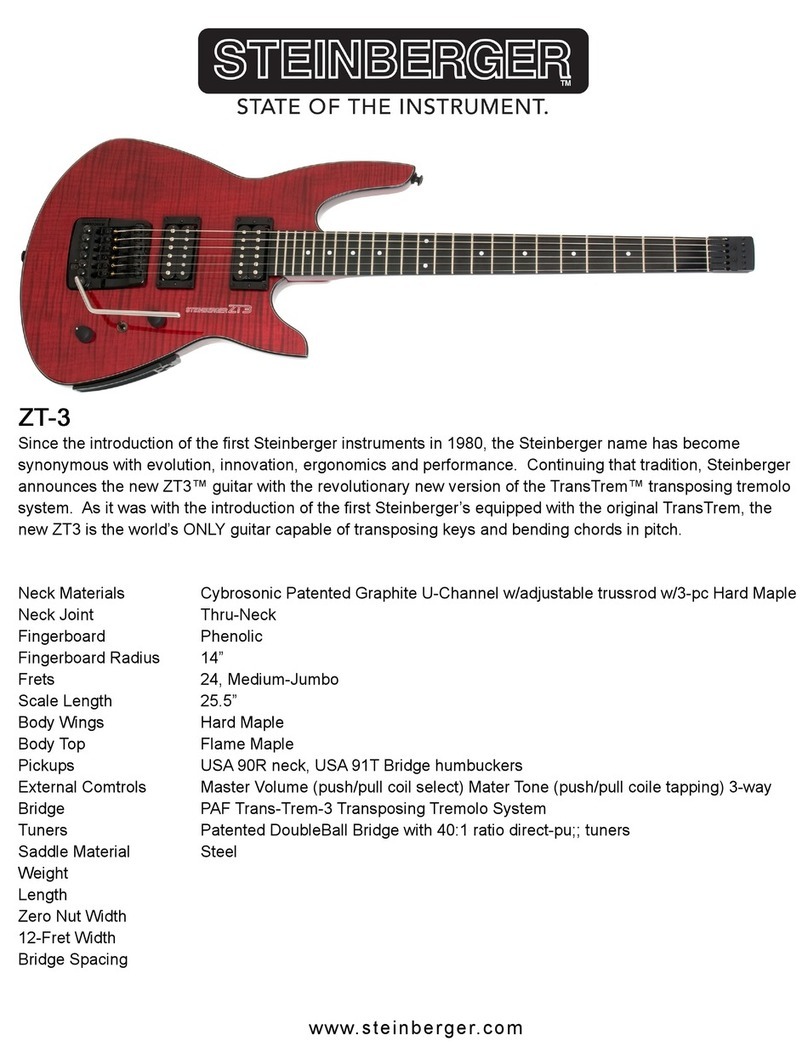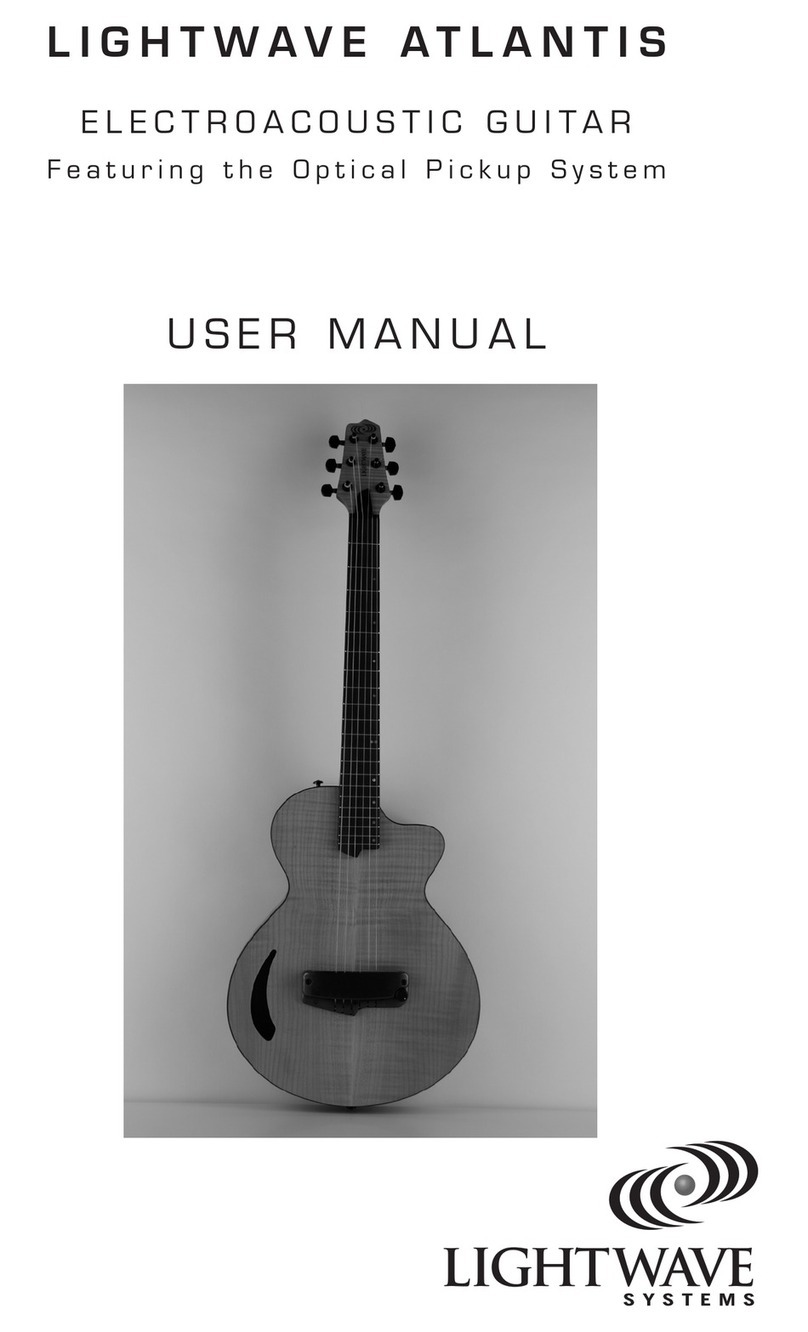4
Guild’s Commitment to Craftsmanship
Guild was established in 1952 by Alfred Dronge.
The rst guitars from his small workshop were
handmade with expensive rare woods, costly
lacquers, hand-wound pickups for the electrics, and
the attention to detail that only an experienced
musician could give. The workshop was located in
New York City, where most of the top jazz, studio
and touring guitarists were frequently seen. Their
suggestions were always listened to carefully.
The Guild name is derived from the master craft
guilds of the Middle Ages. During that period, only
the craftsmen who had achieved the highest skills
were permitted to join these guilds. Our policy today
is much like that of yesteryear. The name “Guild”
expresses the highest standards in the art of wood
craftsmanship and guitar making.
Even today, the woods used in Guild guitars are
selected by hand. Our buyers travel the world
extensively, directly to the sources of the many
different woods we use. There, they carefully select
from opened logs and purchase only the highest grade
woods for creating Guild guitars.
Guild guitars are handmade in Tacoma, Wash.,
in an environment where quality, innovation and
service are the ultimate goals of the entire Guild staff.
Our highly skilled artisans take extreme pride in
every guitar we produce. A pride that restores
meaning to the words “American made”. We are
condent you will share this pride in the ownership
of your new guitar.
